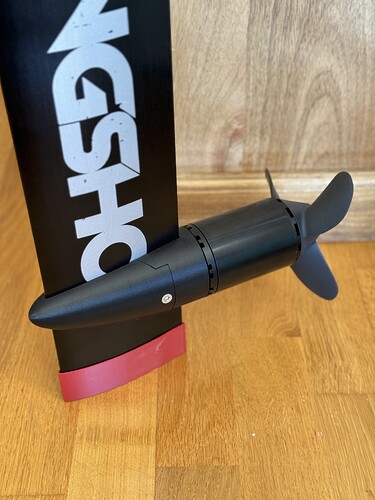Looking for advice - opinion on does anyone replace their 3D printed motor mount each season even if it shows no sign of cracking or wear as a preventative maintenance best practice?
I print with PETG, and never had issues.
No reinforcement.
Certain properties are better in abs but others worse.
From my little experiments 3d printing with petg and PC, I recommend printing with no fan, other than bridge (or probably support). It is day and night regarding layer adhesion and thus part strength.
And I liked petg for being flexible instead of breaking fast when bending.
Thats an amazing finish- how did you achieve that? What printer settings do you use? Nozzle & bed temp, speed and retraction? Also what printer? I have a Creality Ender 3 - wondering if the stock nozzle can work with this material.
Nice… ok sounds out of my league. Will take a look at the Bambu printers. Have just ordered a new nozzle that can handle the CF and ordered some PETG-CF. Just doing initial test prints in PLA to test fitting it all together.
The main thing I wanted to know was infill - are you using 100%? or somehow adding epoxy etc?
Thanks.
No Epoxy. 7 walls and 60% Infill
No Epoxy. 6 walls and 66% Infill
Thanks.
Which direction/orientation do you print objects to get the most strength? I read on the forum to print the propeller blades horizontally. Wondering about the motor mount and mast clamp too?
I print everything horizontally. Of course, it always depends on the construction
Thanks - yeah I was assuming that would be stronger. Is that for all parts eg the mast clamps too? How do you get such a great finish… or rather, how do you do supports in a way that allows such a great finish? I am using Cura and playing around with this… but end up with really messy surface. Particularly difficult is the folding props.
The beautiful surface comes mainly from the CF content in the filament. Everything else is good slicer settings and a long 3D printing experience.
I don’t like PETG because it degrades in water and breaks down when exposed to vibration. I believe that adding unstructured carbon fibers degrades the properties of the original material. It becomes hard and brittle, the only positive thing is its appearance. In general, I don’t really trust 3D printing and would definitely prefer injection molding or aluminum milling if I had the opportunity.
Speaking of motor mounts.
Has anyone found a sweet STL for a Naish S26 or S27?
Sorry I’ve wasted dozens of hours of printing trying different models.
My Onshape skill are just at the beginner level! ![]()
TPU for clamp. PETG or ABS for back of mount. PLA or whatever for nosecone.
I broke one 2 piece clamp filled with epoxy before this and haven’t had any more issues (besides lost the nose cone because it was just press fit initially)
I ran amz3d pla for my mast clamp all last season more than 150 sessions and its still good. It appears pla if printed with good layer adhesion and not left baking in direct sun is ok. I used white to minimize heat absorbtion.
I’ve just been watching a bunch of videos of people comparing materials… looks like PLA is actually stronger than others like ABS and PETG - and some of the PLA +'s have better heat range. That said, the layer adhesion seems to be the issue so I’m not convinced youtubers do that good a test.
Talking with someone who does 3D printing for a living… they said: “Petg-cf or nylon would be my recommendation for an efoil. Tpu is very hygroscopic so not great for applications involving water. It’s definitely one of the most durable filaments and could work but may not come out nice with a complex shape that has thin walls”
I posted this earlier - but this filament guide by Bambulabs is very useful.
Interesting to see that PA6-CF is better in every aspect than any other material in their table (aside hygroscopicity and layer adhesion of TPU)
Yeah. All these years I’ve heard that PLA is just a beginners filament and no good. Quite the opposite… ofcourse as long as it’s not exposed to heat above 60C - which is useless for me here in Queensland Australia.
I have been doing some research and found a few changes to make to print settings and what a difference! I’ve just printed a folding prop blade… and I can’t break it at all (by hand at least).
I have just created a new topic to document my build - and added a post on 3D printing which details how to get the strongest prints. I will update it as I learn more.
